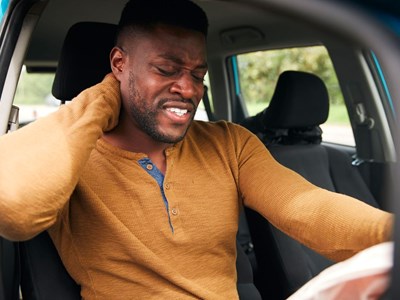Hurt in an Arkansas Car Wreck? Here’s What to Do Next

Call 9-1-1 if you are hurt in an Arkansas car wreck. Then, seek immediate medical attention.
Next, you should protect your possible compensation for medical bills, lost wages, and pain and suffering. Even if you are disoriented, it is critical to have an after-accident plan in place and get through the incident to protect your rights in the event of a potential claim.
In this post, the team at Beacon Legal Group outlines the 6 steps you should take if you or a family member suffered from injuries in an Arkansas car wreck.
Step 1: Secure People & Vehicles at the Accident Scene
Pull over to a safe, well-lit location, preferably where other drivers can see both you and the other driver. If your car poses a hazard on the road, you should move it, even to a sidewalk if possible. Remain calm and use your vehicle’s emergency lights to warn drivers in live traffic.
Step 2: Contact First Responders for Help
Seek medical attention for yourself or others, especially if injured. Check if you or anyone else has injuries. Contact Fire & Rescue or an ambulance if anyone exhibits even a minor injury due to the accident. In Arkansas, you can reach emergency medical help by dialing 911 or *55 from your cell phone. Apart from contact information, be prepared to provide detailed location information and anything else you believe will assist them in quickly and easily locating you.
Step 3: Exchange Information with the Other Driver
When initiating the document exchange process, exchange only insurance and contact information. This tactic can help stop you from saying anything that might be used against you in the future.
Avoid making admissions or blurting out an apology, even if you believe you are at fault. You should also reserve the temptation to angrily lash out at the other driver. Regardless of the facts, it is best to avoid debating who is to blame at the scene of an accident. Arkansas laws will determine who is liable for the accident.
Refrain from discussing any potential injuries as well. You may not always be immediately aware of the extent of damage to your car or to yourself. If someone inquires about your or your passengers’ health, respond with something along the lines of: “Only my doctor can assess my health.”
When communicating with others, stick to the facts. Do not discuss who was at fault or how much insurance you have. Do not enter into side deals with other drivers to avoid an insurance claim, even if they offer a substantial sum or claim they lack auto insurance. Making a “handshake deal” with cash on the spot may expose you to significant expenses later.
Step 4: Preserve Accident Scene Evidence if Possible
Insurance companies will want to know the specifics of the accident. Here is the type of evidence you should try to preserve, if possible:
- Names and contact information of those involved
- Insurance companies and policy numbers
- Driver’s license and license plate numbers
- Vehicle types, colors, and models
- Accident location
- Photos or videos of the accident scene
- Witness names and contact information
- Current weather conditions
- Police accident report
Depending on your policy, you may have access to roadside assistance, towing services, rental car coverage, or other aid following an accident. Save accident-related bills and medical records upon hospital discharge in case you need to reference them later.
Step 5: File an Insurance Claim Against the At-Fault Driver’s Policy
It is critical to contact your insurance provider immediately. This strategy could expedite the claim process. The insurer may be able to assist you with additional services covered by your policy as well.
Determine which documents you must provide to file a claim. The other driver’s insurer will almost certainly want to inspect your vehicle to prepare a damage estimate. If your vehicle is still operable, you may have to visit a drive-in claims center, a repair shop, or utilize remote inspection tools.
Do not speculate about what happened, even if you are sure of a fact. The reality is that you cannot be sure if other factors played a role in the accident. Tell the insurance adjuster that you are not sure of the facts and wait for the investigation to conclude.
Per Ark. Code § 27-19-501, you must also file a report with the Arkansas Office of Driver Services within 30 days if you suffered from injuries or more than $1,000 in property damage.
Step 6: Speak with an Arkansas Car Accident Injury Lawyer
You should not be responsible for property damage and injuries caused by someone else. A car accident injury lawyer will address your concerns, discuss your legal options, and keep you informed throughout your case.
The negligent party should bear the consequences of their actions and compensate you for your losses, including:
- Pain and suffering
- Mental anguish
- Current and future medical costs
- Property damage
- Current and future lost wages
Insurance companies will offer you less money for your injuries if they can legally get away with it—and they are well within their right to do so. However, they may not have all the facts of your case correct. Working with legal representation ensures that someone considers your side of the story and fights for every penny you are owed.
Hurt in an Arkansas Car Wreck? Beacon Legal Group Can Help
If another driver harmed you, Arkansas laws will protect your rights to a settlement through an insurance claim or civil court lawsuit. Speak with a car wreck injury lawyer from Beacon Legal Group to help you through the process.
Contact Beacon Legal Group for an initial case evaluation by messaging us online or calling (501) 907-9539. We don’t get paid for our legal services until you win your case.